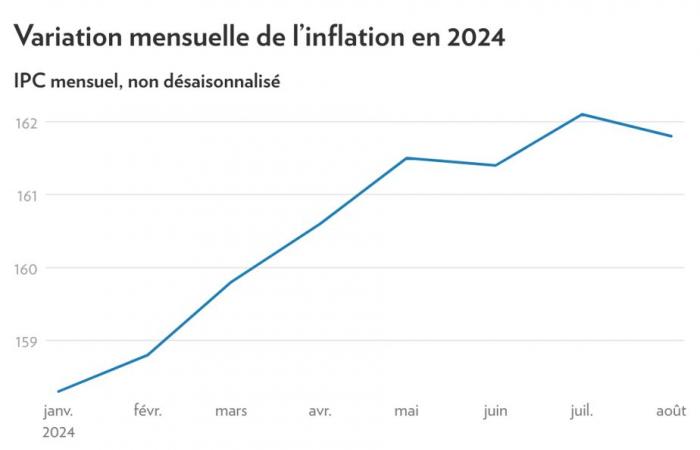Every Saturday, one of our journalists, along with experts, answers one of your questions on the economy, finances, markets, etc.
Published at 1:19 a.m.
Updated at 7:00 a.m.
Could you explain to me the famous cost of living which is measured in percentage? I think I would have an easier time if it were expressed in dollars.
Richard Tremblay
Inflation is measured in percentages, not dollars. There’s a reason for that. It’s a general indicator of how the cost of living is changing in a country or province, not a personalized measure. The Consumer Price Index (CPI) published each month by Statistics Canada tracks the price changes of a fixed basket of goods and services that are representative of Canadian household consumption.
The price of each of the products that make up this basket fluctuates enormously from one month to the next, both downwards and upwards.
For a given month, the CPI may therefore have increased compared to the previous month, but inflation continues to fall on an annual basis.
From year to year, the price of the basket of goods and services increases constantly, with the exception of very rare periods when the inflation rate is negative, which is called deflation.
Since 1914, there have been only nine years of deflation or widespread price declines, according to Statistics Canada.
Inflation is a price increase measured monthly and calculated on an annual basis. And, yes, the increases add up each year.
The Bank of Canada offers a simple tool to see the cumulative effect of inflation, in dollars, as our reader wishes. For example, something that cost $105 in 2022 would cost $109.20 in 2023 and $111.33 in 2024. The inflation rate has fluctuated over this period, but has averaged 2.97%.
Check out the Bank of Canada tool
The basket of products tracked is updated regularly by Statistics Canada to reflect changes in consumption habits. But it cannot accurately represent the inflation experienced by each consumer or household, because not everyone buys the same thing.
For example, the price of gasoline is an element that is included in the calculation of the overall inflation rate (CPI). Its increase hits truckers and taxi drivers hardest, but less so those who work from home. However, everyone suffers the indirect effects of an increase in the price of gasoline, which is an essential product for most industries that manufacture and distribute what we buy, particularly at the grocery store.
There is therefore not a single measure of inflation, but several, depending on the type of consumption. The consumer price index is an overall measure of price changes.
Check out our “Demystifying the Economy” section







